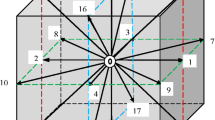Abstract
The coastal TIBL is one of the most important and interesting atmospheric processes in shoreline areas, because it has some distinct turbulent features and because it has a major influence on atmospheric dispersion in shoreline areas. In this paper the characteristics of the TIBL, such as its growth parabolically with downwind distance and its turbulent structure are examined.
Similar content being viewed by others
References
Durand, P.et al.: 1989, ‘A Sea-Land Transition Observed during the COAST Experiment’,J. Atmos. Sci. 46, 1, 96–116.
Fritts, T. W.et al.: 1980, ‘A Formulation for Defining the Development of the TIBL in Sea Breeze Flows’, Preprint, Second Conf. on Coastal Meteorology, AMS, P. 147–150.
Mellor, G. L. and Yamada, T.: 1974, ‘A Hierarchy of Turbulence Closure Models for Planetary Boundary Layers’,J. Atmos. Sci. 31, 10, 1791–1806.
Pielke, R. A.: 1974a, ‘A Three-Dimensional Numerical Model of the Sea Breezes over South Florida’,Mon. Wea. Rev. 102, 115–139.
Author information
Authors and Affiliations
Rights and permissions
About this article
Cite this article
Weimei, J., Xiaoming, W. & Jingnan, Z. A higher order closure model applied to research on the structure of the thermal internal boundary layer (TIBL). Boundary-Layer Meteorol 61, 301–307 (1992). https://doi.org/10.1007/BF02042937
Accepted:
Issue Date:
DOI: https://doi.org/10.1007/BF02042937




